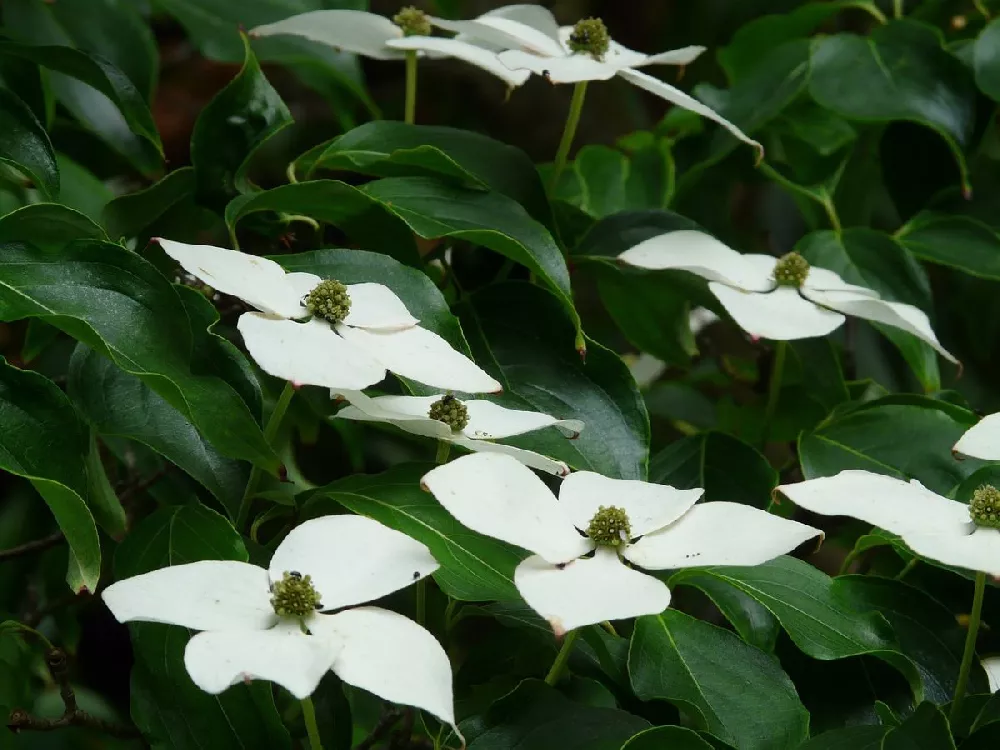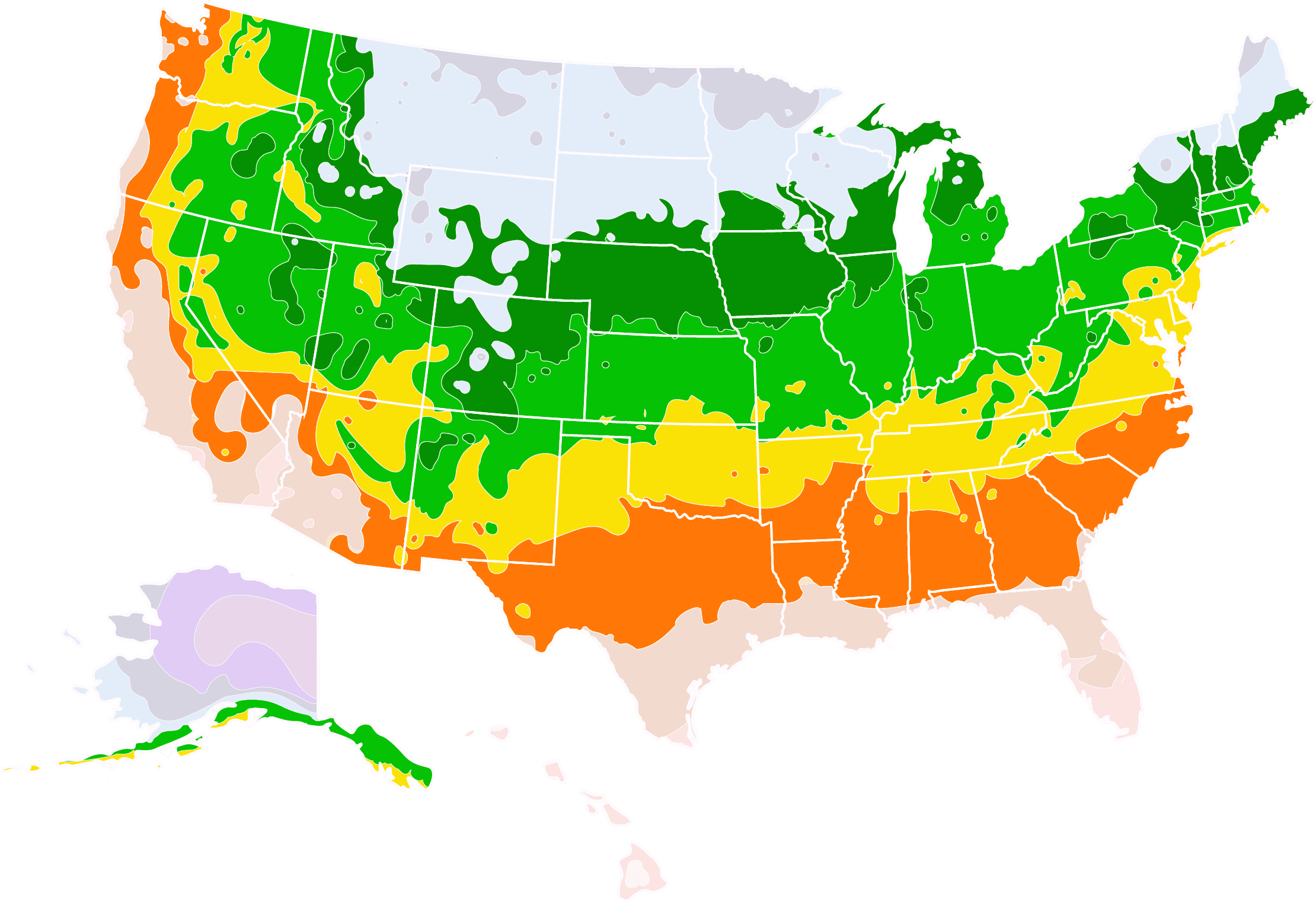Blue Ray™ Kousa Dogwood for Sale - Buying & Growing Guide
A relatively new introduction, the Blue Ray™ Kousa Dogwood, Cornus kousa 'Blue Ray,' has earned a great deal of positive buzz since it was released by cultivator Ray Jackson, and for good reason. It's a highly disease-resistant flowering tree with four seasons of interest in the garden and a unique look that is unlike any other dogwood. In early summer, it is covered with creamy white star-shaped bracts that can light up your garden or landscape and lead to small red ornamental berries. In summer, handsome blue-green leaves adorn the full, rounded canopy. In fall, those leaves turn an unusual shade of purple-red before falling to blanket the ground. Winter brings exfoliating, textured bark, and a strongly horizontal silhouette that adds structure to the garden. Here are a few more reasons to be the first in your neighborhood to plant this lovely new cultivar:
- Matures to a height of 15 to 25 feet, suitable for smaller gardens.
- Grows throughout much of the continental U.S.
- Thrives in semi-shaded spots, especially in the southern part of its range.
Enter your zip code to find nearby stores that may carry this plant.
Plant Care
Sunlight

The Blue Ray™ Kousa Dogwood thrives in full sun to partial shade, four hours or more of direct sunlight a day.
Watering
The Blue Ray™ Kousa Dogwood likes about an inch of water a week, either from rain or supplemental watering.
Fertilizing

Fertilize with a slow-release product designed for landscape trees and shrubs, such as a 12-4-8 formula.
Planting and Care
Planting instructions
The Blue Ray™ Kousa Dogwood should be sited where it will get at least four hours of direct sunlight in the southern part of its range, though it can handle full sun farther north. Choose a location for your tree that has soil that drains well and is protected from prevailing winds. Unpot the sapling and tease out any encircling roots, which can girdle the root ball and kill the tree. Dig a hole that’s as deep as the root ball and two to three times as wide. Place the tree in the hole, spreading out the roots. Holding it upright and steady, fill in around the roots with topsoil that’s been mixed with some well-rotted compost or manure, tamping down as you go to eliminate air pockets. Water thoroughly. Apply a two to three-inch layer of organic mulch such as bark chips around the root zone to conserve moisture and hinder weed growth but keep it from touching the trunk to avoid problems with rot.
Watering and nutrients
Water newly-planted trees every few days until you see signs of robust new growth on the branches. Then, cut back your watering to once a week, giving it about an inch of water each time. During very hot or dry weather, you may need to increase your rate of watering. Fertilize in spring and fall with a slow-release fertilizer designed for landscape trees and shrubs, such as a 12-4-8 or 16-4-8 formula.
Pollination
The white star-shaped “flowers” of the Blue Ray™ Kousa Dogwood are actually not flowers, but bracts, designed to attract pollinating insects to the tree. The dogwood’s flower is actually the smaller green structure in the middle of the bract, which turns bright red later in the summer.
Pruning
Prune your Blue Ray™ Kousa Dogwood lightly, since the tree should assume an attractive, rounded canopy without extensive trimming. Prune out any dead, diseased or damaged limbs whenever you see them, as well as any suckers that spring up near the base of the trunk. You may also cut out any branches that are rubbing against each other.
Pests, diseases, and animals
The Blue Ray™ Kousa Dogwood is resistant to the pests and diseases that commonly prey on dogwoods. Pests that you might see on your tree include spider mites, aphids and dogwood borers. A healthy tree should be able to fend off most infestations, but a general-purpose insecticide can be used if the infestation is serious. Diseases that will rarely appear include anthracnose, a fungal disease, and powdery mildew. Canker is also sometimes seen on dogwoods, but only when they are planted in an area that is prone to standing water or soggy soil.
Achieving maximum results
Knowing how to use your Blue Ray™ Kousa Dogwood in your garden or landscape is one way to ensure maximum results. With its profuse spring flowering and year-round interest, this is not a tree to hide away in a dark corner. It would work well, in fact, in a highly visible location where it can be viewed throughout the year. Imagine a grouping of three or five of these on a large sloping front yard, for example, underplanted with shade-loving perennials such as astilbes. It makes an excellent foundation planting, as long as it is properly spaced at least 10 to 12 feet away from your home or other structure. Since it handles shade well, it would work at the edge of a wooded area and would be attractive in a cottage garden or Asian-inspired garden as well.
FAQs
Where can I grow a Blue Ray™ Kousa Dogwood?
This attractive tree grows well in USDA hardiness zones five through eight and can handle temperatures down to -10 degrees Fahrenheit. That means it can be grown as far north as coastal New England and the Pacific Northwest, and as far south as Northern Florida.
How big does the Blue Ray™ Kousa Dogwood get?
A healthy tree will achieve a mature height of 15 to 25 feet, with a mature width of around 25 feet. Its aspect is more horizontal than vertical, which should be kept in mind when you are spacing it near buildings or other trees.
Can I grow this tree in a container?
Yes, you can. Choose a container that is roughly twice the size of the root ball, with good drainage holes in the bottom. Use a good-quality potting mix and plant as per our directions above. Keep in mind that a container-grown tree will be constrained in size and may max out at five or six feet tall. Also, note that pot-grown plants tend to need more frequent watering than those grown in the ground.
Compare Similar Products
You can't add more Product Name - Product size to the cart.
OK








